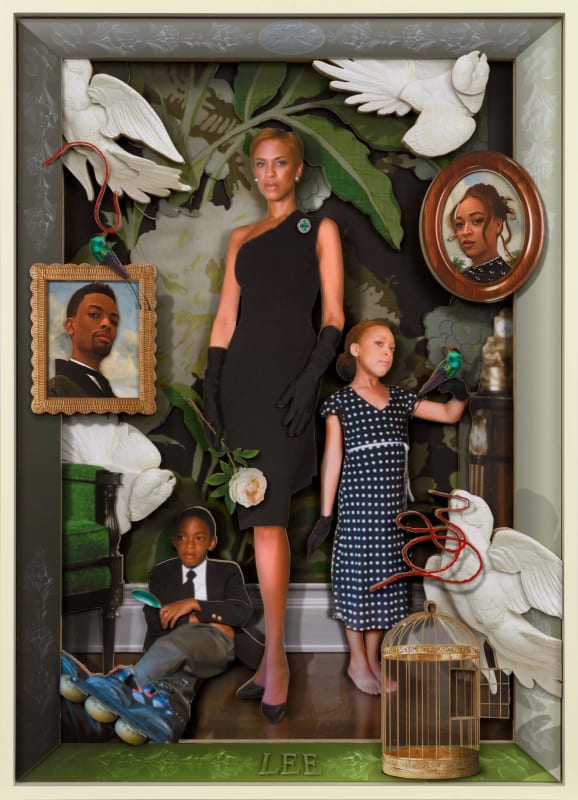Edwynn Houk Gallery is pleased to announce Ron Norsworthy: American Dream, on view from November 14 through December 23. This marks Norsworthy’s second solo exhibition with the gallery.
American Dream envisions the domestic interiors of Black middle-class life in scenes that hover between the achieved and the dreamed. The series includes ten collaged reliefs, made from photographs layered up to four inches deep. In these works, the construction remains visible in raw plywood edges, reflecting both the labor of cultural ascendancy and the performance that makes it visible. Also on view are three Layer Maps, a new extension of Norsworthy’s process. Each work on paper translates the layered build of the reliefs into precise, color-blocked studies.
At first glance, Norsworthy’s interiors appear orderly and composed, but their stability quickly falters. Walls tilt, mirrors double, and staircases lead to unseen stories. The architecture seems self-aware, both material and metaphor, revealing the tension between aspiration and artifice. Figures drift through these fractured rooms, caught between motion and reflection, inhabiting what W. E. B. Du Bois described as double consciousness. Within Norsworthy’s worlds, fragments of art history, film, design, and personal memory coexist on equal ground: Diana Ross and Billy Dee Williams from Mahogany, Grant Wood’s Young Corn, Good Times’ Black Jesus, and lilies grown in his own garden all belong to the same visual lexicon. The resulting vision is at once intimate and collective, drawn from the shared imagery of American pictures.
Norsworthy approaches photography as both a material and cultural language, one that has long shaped how America imagines itself. Since its beginnings, the medium has not only mirrored the American Dream but helped to build it, creating images of prosperity, belonging, and self-invention that continue to define the nation’s image. His constructions uncover the scaffolding behind those ideals. His work foregrounds the photograph’s physical presence, exposing the structures—both visible and invisible—that sustain the dream. Through this merging of the visual and the social, American Dream reveals photography not as reflection but as structure, the vessel through which America pictures and forms itself.

